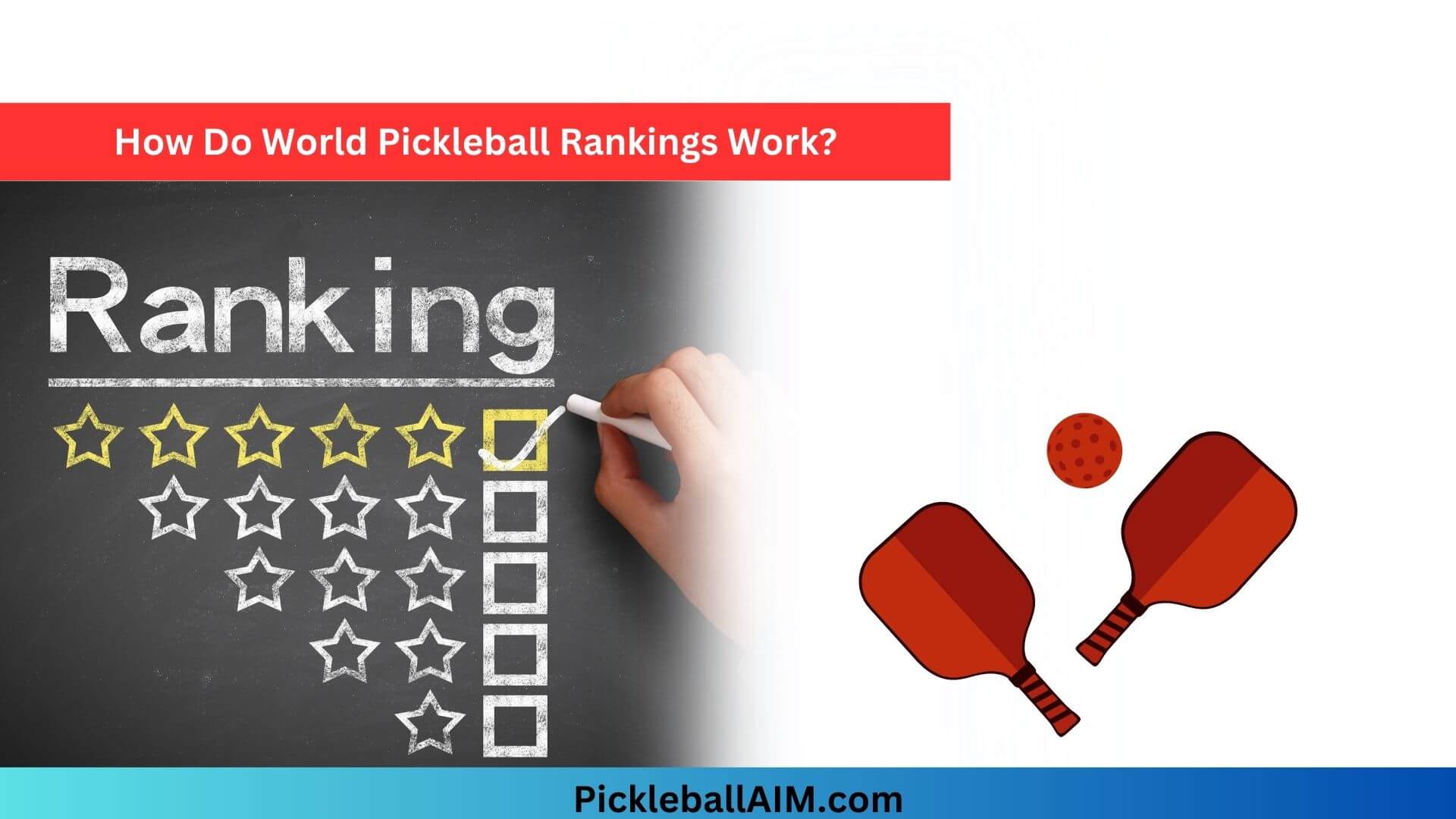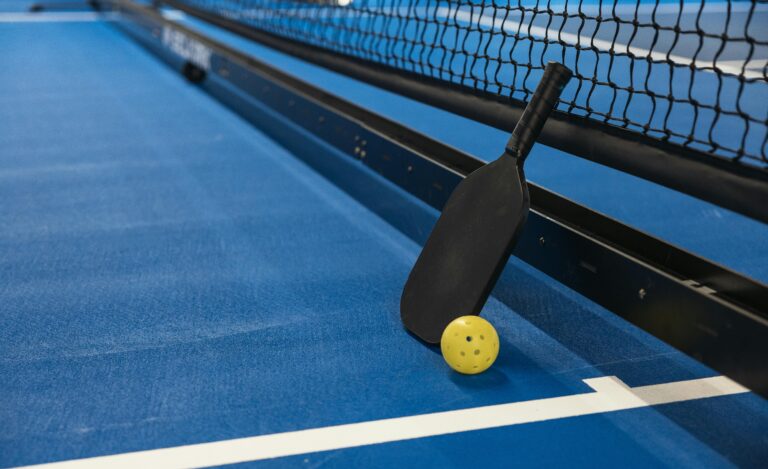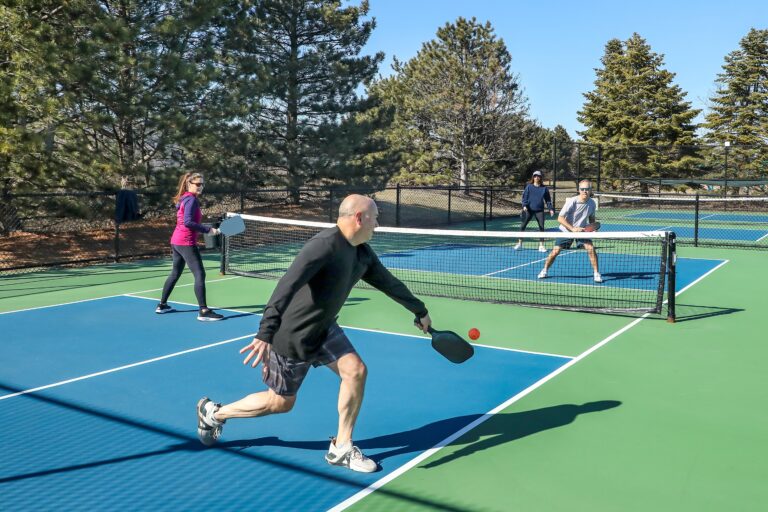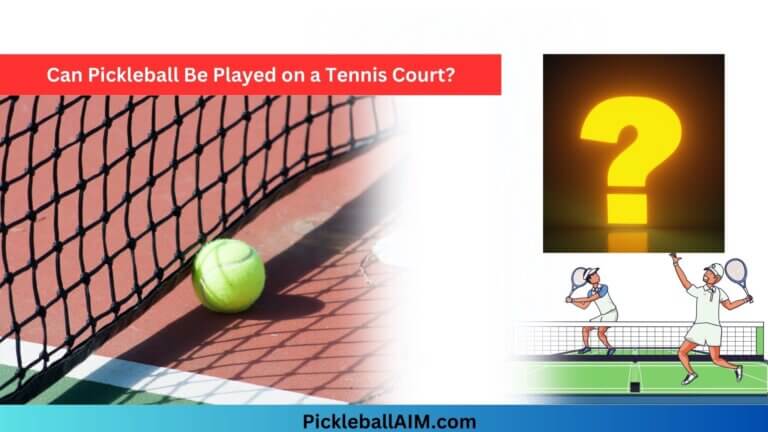Cracking the Code: How Do World Pickleball Rankings Work?
How Do World Pickleball Rankings Work?
World Pickleball Rankings work by assigning points to players based on their performance in sanctioned tournaments. The points earned depend on the tournament’s level and the player’s finishing position. Higher-level tournaments award more points. Rankings are updated periodically to reflect recent tournament results, with players accumulating points over a specific timeframe. The player with the highest accumulated points typically holds the top rank. Rankings provide a way to assess a player’s skill and competitive standing within the global pickleball community.
Pickleball, a fast-paced and exciting paddle sport, has been rapidly gaining popularity across the globe. As the sport grows, so does the interest in understanding the ranking system that determines the best players in the world. In this article, we’ll explore the intricacies of how world pickleball rankings work, providing you with a deeper insight into the sport’s competitive landscape.
The Basics of Pickleball Rankings
Pickleball rankings, much like those in tennis or other individual sports, are a way to assess a player’s performance and skill level relative to their peers. These rankings serve several essential functions:
1. Determining Tournament Seeding
Rankings help tournament organizers seed players appropriately, ensuring that top players don’t face each other in the early rounds. This enhances the competitive balance of events and makes for more exciting matchups.
2. Evaluating Player Progress
Players can track their own progress and development by monitoring their ranking over time. Rising through the ranks reflects a player’s improved skills and consistent performance.
3. Fostering Healthy Competition
Rankings foster healthy competition, motivating players to improve and compete at their best. The pursuit of higher rankings often leads to the refinement of techniques and strategies.
The Ranking Algorithm
The specific formula used to calculate pickleball rankings can vary, but most systems consider the following factors:
1. Tournament Results
The primary driver of a player’s ranking is their performance in tournaments. Wins against higher-ranked opponents and victories in prestigious events carry more weight in the ranking calculation.
2. Opponent’s Ranking
Defeating a player with a higher ranking contributes positively to a player’s own ranking, while losing to a lower-ranked player can have a negative impact.
3. Consistency
Consistency is rewarded in ranking systems. Consistently performing well in various tournaments, rather than having occasional standout victories, tends to result in a higher ranking.
4. Points Decay
Rankings often include a points decay mechanism, where older tournament results carry less weight. This encourages players to continue participating and performing well in recent events.
Types of Pickleball Rankings
Pickleball rankings can vary depending on the organization or region. The two primary ranking systems are:
1. National Rankings
Each country with a pickleball community typically maintains its own national ranking system. National rankings help identify the top players within a particular country and are used for seeding in national-level tournaments.
2. International Rankings
For players aspiring to compete at the highest level, international rankings are crucial. These rankings aggregate results from various countries to determine the world’s top players. The International Federation of Pickleball (IFP) is one organization that maintains international rankings.
The Road to the Top
Reaching the pinnacle of the pickleball rankings requires dedication, skill, and consistent performance. Players must continually challenge themselves by participating in tournaments, facing opponents of varying skill levels, and striving for victories against top-ranked players. The journey to the top of the rankings is an arduous yet rewarding process that showcases a player’s commitment to mastering the sport.
The Future of Pickleball Rankings
As the sport of pickleball continues to grow and evolve, so too will the ranking systems. The future promises even more accurate, sophisticated, and inclusive methods for assessing player skill and performance. Some potential developments to watch for include:
1. Integration of Match Analytics
Advancements in technology are making it possible to capture detailed data during pickleball matches, including shot placement, speed, and player movement. Integrating this data into ranking algorithms could offer a more precise evaluation of a player’s strengths and weaknesses.
2. Expanded International Rankings
With pickleball’s global expansion, international rankings are likely to become more comprehensive and competitive. Players from different countries will have increased opportunities to compete on the world stage, further elevating the sport’s global profile.
3. Inclusivity and Age-Based Rankings
Pickleball has gained popularity among players of all ages, including juniors and seniors. Future ranking systems may introduce age-based categories to ensure fair competition and recognize excellence within different age groups.
4. Enhanced Transparency
As rankings become more sophisticated, maintaining transparency in the calculation methods will be crucial. Players and fans alike will benefit from a clear understanding of how rankings are determined and how they can affect a player’s standing.
Getting Involved in Pickleball Rankings
For aspiring pickleball players looking to climb the rankings, the path is clear: practice, participate in tournaments, and aim for consistent performance. Joining a local club or organization can provide valuable guidance and opportunities for competitive play.
If you’re a fan or enthusiast, following the world of pickleball rankings can add a new layer of excitement to your appreciation of the sport. You can keep an eye on rankings through official websites, social media, and news outlets dedicated to pickleball.
The Human Element: Beyond the Numbers
While pickleball rankings provide an objective assessment of a player’s performance, they don’t capture the full essence of the sport. The heart of pickleball lies in the spirit of competition, camaraderie, and the sheer joy of playing. Rankings are a valuable tool, but they don’t tell the whole story.
Sportsmanship and Respect
One of the most endearing qualities of pickleball is the culture of sportsmanship and respect that permeates the community. Players often applaud their opponents’ great shots, offer encouraging words, and share post-match handshakes and smiles. These intangible qualities, while not reflected in rankings, are integral to the sport’s ethos.
Diversity and Inclusivity
Pickleball’s appeal knows no bounds. It brings together people from various backgrounds, ages, and skill levels. The courts are a melting pot where individuals of different walks of life unite under the common banner of the sport they love. Rankings can’t measure the sense of belonging and community that pickleball fosters.
Continuous Improvement
For many players, the journey of self-improvement is as rewarding as achieving a high ranking. The pursuit of excellence, learning from mistakes, and mastering new skills are all part of the pickleball experience. Rankings are a reflection of progress, but they don’t capture the profound personal growth that players undergo.
Passion and Dedication
Behind every ranking is a story of dedication and passion. Players often invest countless hours in practice, travel extensively to compete, and make sacrifices to pursue their love of pickleball. While rankings acknowledge success, they don’t quantify the sheer love players have for the sport.
A Grand Slam of Experience
In conclusion, understanding how world pickleball rankings work is just one facet of the sport’s vibrant tapestry. While rankings provide an objective measure of performance and competition, they don’t encapsulate the full richness of pickleball.
As you immerse yourself in the world of pickleball, whether as a player, fan, or enthusiast, remember that the true essence of the sport goes beyond numbers and statistics. It lies in the friendships forged, the lessons learned, and the sheer enjoyment of the game. Pickleball is not just about where you rank; it’s about the incredible journey you embark upon as you chase that perfect shot, share laughs with opponents, and celebrate every point won.
So, as you engage with the world of pickleball, relish the experience, cherish the moments on and off the court, and embrace the values that make this sport truly remarkable. Whether you’re aiming for the top of the rankings or simply savoring the thrill of each game, pickleball offers an unparalleled grand slam of experiences that go far beyond what any ranking can measure.
In Closing
Understanding how pickleball rankings work is like deciphering the heartbeat of the sport. It reveals the dedication, talent, and fierce competition that drive players to excel. Whether you’re a player striving to improve your ranking or a fan eager to witness the rise of new stars, pickleball rankings offer a window into the sport’s dynamic and ever-evolving landscape.
As pickleball continues to capture the hearts of athletes and enthusiasts around the world, the ranking systems will remain a vital part of the sport’s fabric, showcasing the excellence and commitment of those who embrace the thrill of the game. So, whether you’re pursuing pickleball glory or simply relishing the action from the sidelines, understanding how rankings work can deepen your appreciation for this remarkable sport.







